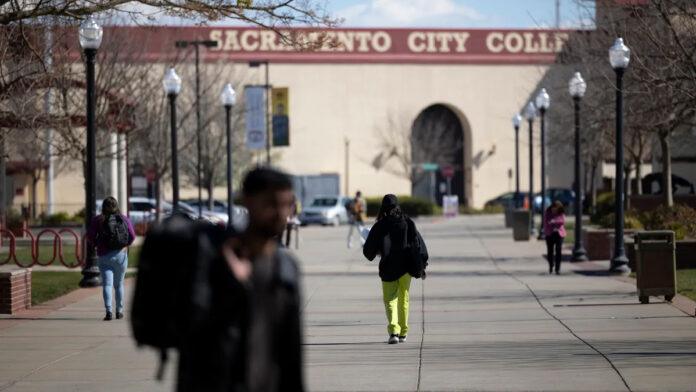I was once told that there was an agenda to destroy everyday life, culture, and history, and especially what is called the middle class.
The rationale behind it was that after destruction comes reconstruction. That with the destruction of everyday life people are confused, with culture people lose their identity, with history people lose the knowledge of where they come from – an important reference to their past, and with the destruction of the middle class it is lost. economic independence, since this is based on small businesses, which are the largest employers in society, and those that sustain the economy.
The purpose, I understood, is that people are easily manipulated by a certain powerful elite that governs behind the politicians.
When people lose hope and are overcome by hopelessness – which is the result of the manipulation of society through scarcity and violence, they (the government or the powers in charge) offer salvation, which this amounts to social conditioning – or restrictions on freedom itself. It is a disastrous contract, where we would give up our freedom in exchange for “security.”
I have noticed that security in society has deteriorated lately, news of assaults and murders of people, robberies of businesses and homes in the suburbs have increased in alarming numbers.
More than “10,000 people have had their cars stolen so far this year in Oakland…” reads one headline, and the same in San Francisco, where dealing in stolen goods has become a ‘regular job’ for many. , these sellers of stolen items are considered merchants.
Not only is this corrupting many, but it is creating a culture of thieves, while the police are just a sidewalk away without confiscating what was stolen, and without arresting those who buy this ill-gotten merchandise.
Every day, hundreds of people parade along 24th Street and The Mission – in BART Plaza – looking for ‘deals’, either for their personal use or for resale.
I have always known that in addition to the one who steals, the one who buys what is stolen also commits a crime of receiving what was stolen, and therefore they share the blame with those who carry out the theft.
Those who were able to see the news of a young man who, without being provoked, murdered another young man who was with his girlfriend on a street in Oakland. It was so painful to see how, without respect for life, he pierced a knife through the heart of the man who was accompanied by his girlfriend when he came from a wedding.
Likewise, the severity of this social chaos is not limited to crime. It also affects the economic system, many family businesses and large companies are closing, leaving consumers without their favorite restaurants or stores, depriving them of part of their lives.
The streets of our businesses have reached a point of dirt and violence that makes merchants prefer to close their businesses, many of which have been small family businesses that have supplied the neighborhoods with important consumer products. Let’s imagine for a moment, what will be of our neighborhood in a few years? Will we be able to maintain our lifestyle? Will we be able to preserve the culture of our neighborhood? Will we keep the little piece of our land in this great city? I don’t believe it.
Crime and manipulation of society
Mexico and the US focus on semiconductors at economic dialogue

Mexico News Daily
Mexico and the United States have launched a joint “semiconductor action plan” that aims to make North America the world’s “most powerful” chip-producing region.
The announcement of the plan came after high-ranking Mexican and United States officials participated in the third meeting of the relaunched Mexico-U.S. High Level Economic Dialogue (HLED) in Washington D.C. on Friday.
“Today… we’re launching a joint semiconductor action plan to accelerate our integration, to scale our efforts to attract new investment,” U.S. Secretary of State Antony Blinken told a press conference.
“Under President Biden’s leadership, we’re building regional clean energy technologies and semiconductor supply chains through the Inflation Reduction Act and the bipartisan CHIPS and Science Act that will drive our economies through this century,” he said.
Blinken said that “Mexico’s overhauled one-stop shop website” – the federal government’s “ventanilla única” – “is providing prospective investors the tax and regulatory information that they need to take advantage of this landmark legislation.”
At the same press conference, Foreign Affairs Minister Alicia Bárcena and Economy Minister Raquel Buenrostro offered additional details on Mexico and the United States’ shared ambitions for the semiconductor industry.
Bárcena, who succeeded Marcelo Ebrard as foreign minister earlier this year, said that “supply chains in our region and especially semiconductors and conductors” was “one of the most interesting topics” discussed at Friday’s bilateral meeting.
She said that Mexico and the United States have “a very clear strategy: for this region to become the most powerful region in production of semiconductors and conductors in the world.”
According to the international freight platform ShipHub, Taiwan is the world’s largest semiconductor manufacturer, accounting for 50% of total production. South Korea ranks second followed by Japan, China and the United States.
Buenrostro said Friday that Mexico and the U.S. are “working together to turn North America into the most important place for the integration of supply chains pertaining to several strategic sectors,” including semiconductors, electric vehicles and medical supplies.
“Regarding semiconductors, Mexico, and the U.S. … are working to see how we can complement each other on this technology to have the strongest supply chain on semiconductors, taking advantage of different ICT markets,” she said.
“For Mexico, this is a significant opportunity. It allows us to have better paying jobs,” Buenrostro said.
At last year’s HLED, held shortly after the United States government released its implementation strategy for the US $50 billion “Chips for America” program, the U.S. invited Mexico to take advantage of massive investment in the sector.
“… What we have is an invitation that is received perhaps once in a lifetime, so we’re going to accept it, and thank you very much for thinking of Mexico,” Ebrard told U.S. officials at a press conference in September 2022.
In a joint statement released on Friday, the Mexican and United States governments said that their officials had “discussed how to seize emerging opportunities through the HLED to promote manufacturing investment and generate employment and prosperity as the United States implements the U.S. CHIPS and Science Act and the Inflation Reduction Act.”
Those two acts, the statement said, “together devote more than $400 billion to strengthening regional semiconductor supply chains, reducing greenhouse gas emissions, and boosting demand for electric vehicles and clean energy technologies.”
“We discussed how to continue medical device and pharmaceutical regulatory collaboration, and advance other work. We also considered ways to address the climate crisis and strengthen regional energy security,” the statement added.
Among other issues discussed at the HLED was cooperation at the Mexico-U.S. border, over which huge volumes of licit – and illicit – goods pass.
“We’re taking steps to improve and strengthen even more our border coordination, like piloting a model port to streamline inspections and finding ways to reduce wait times, making it easier for people and goods to cross legally while strengthening our capacity to deal with fentanyl and other illegal narcotics,” Blinken said.
Bárcena also noted that ways in which border infrastructure can be strengthened were discussed.
“When it comes to land trade between the U.S. and Mexico, we have lines of communications that are extremely important for the transportation of merchandise and people. … We have 60 ports of entry on our shared border. … We have shown progress and talked about the infrastructure on both sides [of the border], discussing how we can bring our infrastructure up to speed so that we have better outcomes,” she said.
The foreign minister noted that Mexico set aside 15 billion pesos (about US $860 million) to spend on the modernization of border infrastructure this year.
“Among other things, [the investment will] increase our capacity to detect weapons and synthetic drugs,” she said.
Bárcena also highlighted that Mexico is currently the United States’ largest trade partner, with close to $400 billion in two-way trade in the first half of the year.
“That means many things. It means that there are responsibilities, commitments, and I would also say that there is a shared vision to create one of the most powerful areas economically and socially speaking,” she said.
The HLED was held ahead of this week’s Mexico-U.S. High-Level Security Dialogue, at which the fight against fentanyl is set to be a central issue. Blinken, Secretary of Homeland Security Alejandro Mayorkas and Attorney General Merrick Garland are among the U.S. officials who will attend the meeting in Mexico City on Thursday.
Buenrostro said Friday that Mexico “is committed to supporting the fight against synthetic drugs,” a view that contrasts with that held by some Republican Party lawmakers in the U.S.
“This is something I want to convey. We want to cooperate. We want to help and do everything at our disposal to control the productive chain, the illicit productive chain of … fentanyl,” she said.
Peralta Community College District is seeking proposals – RFP No. 23-24/08
Request for Proposals
The Peralta Community College District (PCCD) is seeking proposals from qualified firms to provide Inspector of Record Services, Laney College Library & Learning Resources Center (RFP No. 23-24/08). Proposals are to be delivered to the Purchasing Department, 501 5th Avenue, Oakland, CA 94606 or electronically (via Vendor Registry), until 11:00 A.M. on October 31, 2023.
The project involves construction of a new three story 75,622 sq. ft. building at 900 Fallon Street, Oakland, CA 94607.
A non-mandatory Pre-proposal video conference meeting will be held on October 9, 2023 at 11:00A.M. via Zoom: Conference Meeting ID 817 2739 4976
https://peralta-edu.zoom.us/j/81727394976
Copies of the proposal documents may be obtained by clicking on the following link: https://vrapp.vendorregistry.com/Bids/View/BidsList?BuyerId=4d041f6c-7568-4c8a-8878-c82684292a3c or, by contacting the Peralta Community College District, Purchasing Department, 501 5th Avenue, Oakland, California, 94606, Phone (510) 466-7225, Office Hours: 8:30 a.m. to 4:30 p.m.
Governing Codes:
GC 53068
EC 81641
Request for Proposals The Peralta Community College District is seeking proposals
The Peralta Community College District (PCCD) is seeking proposals from qualified firms to provide Geotech Engineer of Record Services, Laney College Library & Learning Resources Center (RFP No. 23-24/07). Proposals are to be delivered to the Purchasing Department, 501 5th Avenue, Oakland, CA 94606 or electronically (via Vendor Registry), until 11:00 A.M. on October 31, 2023.
The project includes the selective site demolition and construction necessary for a new academic library and learning resource center on the Laney College campus. The project is a 75,622 square foot, three (3) story concrete and steel structure, Type IIA construction and consists of Type A-3 and B occupancies. Work includes site utilities and landscaping at 900 Fallon Street, Oakland, CA 94607.
A non-mandatory Pre-proposal video conference meeting will be held on October 12, 2023 at 11:00A.M. via Zoom: Conference Meeting ID 869 1952 7712
https://peralta-edu.zoom.us/j/86919527712
Copies of the proposal documents may be obtained by clicking on the following link: https://vrapp.vendorregistry.com/Bids/View/BidsList?BuyerId=4d041f6c-7568-4c8a-8878-c82684292a3c or, by contacting the Peralta Community College District, Purchasing Department, 501 5th Avenue, Oakland, California, 94606, Phone (510) 466-7225, Office Hours: 8:30 a.m. to 4:30 p.m.
Governing Codes:
GC 53068
EC 81641
Mexican photographer Graciela Iturbide wins lifetime achievement award

Mexican photographer Graciela Iturbide has won the prestigious William Klein Prize from the French Academy of Fine Arts, honoring her decades of work capturing Mexican culture and Indigenous communities.
Starting in 2019, the William Klein Prize is awarded every two years to a photographer from anywhere in the world, and assesses artists’ career and commitment to photography. Previously, it was awarded to Raghu Rai (India) and Annie Leibovitz (USA).
The 120,000-euro (US $132,000) prize money will be awarded to Iturbide in a ceremony at the Palais de l’Institut de France in Paris on Oct. 18.
“[Iturbide] is an icon of photography in Latin America,” the Academy said in a statement. “For more than five decades, she has created images that navigate between a documentary approach and a poetic sensibility.”
Born in 1942, Iturbide trained under the iconic Mexican artist Manuel Álvarez Bravo and has worked in countries across the world, including Cuba, East Germany, India, Madagascar, Hungary, France and the United States. She is most well-known for her documentation of Mexican culture, particularly her projects about the Seri Indigenous people of the Sonoran Desert and the women of Juchitán de Zaragoza, Oaxaca.
Iturbide’s portraits of the Seri were part of a commission she received in 1978 from the Ethnographic Archive of the National Indigenous Institute of Mexico. She lived in the 500-person Seri community of Punta Chueca for two months while completing the project.
“I lived with them in their homes so they would see me always with my camera and know that I am a photographer. In this way, we were able to become partners,” she later said.
A year later, she undertook a similar project in the Zapotec Indigenous community of Juchitán de Zaragoza, Oaxaca, which is known for elevating women to positions of authority. She returned to the community multiple times over the following decade, eventually publishing her powerful photographs in the book “Juchitán de las Mujeres” in 1989.
Iturbide has described her relationships with her subjects as a fundamental part of her art, sometimes requiring her to pass up photographic opportunities to respect an interpersonal moment. “To me, it’s more important to get to know the worlds I travel in,” she has said. “This knowledge is so attractive that the photography almost takes second place.”
The Academy recognized this deeply sensitive approach in awarding her the William Klein Prize, saying: “Photography for [Iturbide] is a ‘ritual’ in which she strives to capture the most mythical part of man.”
With reports from Milenio.
The ‘unmet need for contraception’ scam is just another excuse for depopulating the planet
Contrary to the population controllers’ claims, the women of the world are not begging U.S. taxpayers to chemically or surgically sterilize them
Sat Sep 30, 2023 – (LifeSiteNews) — You may be forgiven for not knowing that September 26 was “World Contraception Day.”
In fact, you will probably be surprised to learn that such a day even exists, and that the population controllers continue to celebrate it.
After all, you may say, the population bomb has long been exposed as a myth, while the world’s fertility is in free fall. Even the New York Times admits that the world is about to go into absolute population decline. Don’t the population controllers know when to quit?
The short answer is no, they don’t. And they won’t.
The population control movement, which has billions of dollars in its coffers and tens of thousands of employees, does not intend to go quietly to its grave. Rather, convinced that there are still too many Africans, Asians, and Latin Americans, it hungers to drive human numbers down even faster. In this it enjoys the wholehearted support of the Biden administration, which each year spends over a billion dollars to chemically and surgically sterilize women in low- and middle-income countries.
Now that the population bomb has fizzled, however, they have had to come up with another excuse for their war on people. After all, simply telling entire races or ethnicities to stop having babies just isn’t done anymore, at least outside of Communist China.
So they have taken a different tack. They are now producing studies claiming that poor women around the world are asking to be sterilized and contracepted. This allows them to justify continued U.S. funding of anti-baby programs as a humane response to a real and pressing need of women in the developing world.
And that, ladies and gentlemen, is how a phony statistic called the “unmet need for contraception” came to be conjured up.
In the run-up to World Contraception Day – with the exquisite timing characteristic of a planned propaganda campaign – a new study of the “contraceptive needs of women of reproductive age” was published by The Lancet. (You know, the same British medical journal that disgraced itself during the pandemic by claiming that the COVID virus came from nature.) The study, funded by the Gates Foundation, purported to show that some 162.9 million women around the world had an “unmet need for contraception.”
“Africa has the highest unmet need for contraception in the world,” the authors write. They define this “as the share of sexually active, fertile women who do not have access to contraception but do not want a child at the moment or wish they could have delayed or avoided their most recent pregnancy… Young women between the ages of 15 to 19 saw the lowest demand satisfied at just around 65 percent, followed by the age group of 20 to 24-year-olds (72 percent).”
The reader comes away with the impression that these young women are “demanding” contraceptives that are being denied them, or perhaps that some are even victims of a kind of forced pregnancy.
Nothing could be further from the truth. The surveys relied upon by the authors avoid asking women directly if they wanted contraceptives because that would give away the game: most of those interviewed would say no.
Instead, they cleverly dance around the question of contraception. They ask women who are not pregnant if they planned on having a baby within the next two years. If the answer is no, they are categorized as having an “unmet need for contraception.”
Women who are pregnant are asked if they had planned on getting pregnant when they did. If they respond that their pregnancy was not precisely planned – whether they are happy about it or not – they are categorized as having an “unmet need for contraception.”
Still other surveys don’t even pretend to take the woman’s opinion into account. The simply classify all women of reproductive age with a child two and under, and who is not on birth control, as having an “unmet need for contraception.”
Not until the very end of this 32-page study, which is filled with a dizzying array of charts and sophisticated statistical analysis, do the authors admit that the actual opinions of women do not matter. Their “algorithm,” they say, “does not entail asking women if they need or want contraception, but rather defines need based on whether partnered women do not want children and are not infecund [infertile]. Only unpartnered women who report being sexually active and have these other characteristics are considered to have need.” (p. 325, italics added)
An algorithm is a set of rigorous instructions designed to solve a specific problem. In this case, it was designed to justify the continued effort to abort, sterilize, and contracept the world by claiming that over 100 million women had an “unmet need for contraception.”
The last thing the population controllers want to do is ask the women themselves. Billions upon billions of dollars are at stake.
The ultimate goal of the most anti-human movement in human history remains the same: to depopulate the planet.
Steven Mosher is an internationally recognised authority on China and population issues as well as an acclaimed author and speaker and founder and head of the Population Research Institute. He was the first American social scientist to visit mainland China in 1979 where he witnessed women being forced to have abortion under the new “one-child-policy” which he then exposed to the world.
Truck accident in Chiapas kills 10 Cuban migrants, injures 17

by the El Reportero‘s wire services
Ten Cuban migrants died and 17 more were injured when an overloaded truck overturned in Chiapas early Sunday morning.
The accident happened on the Pijijiapan-Tonalá highway, which is frequently used by migrants traveling north from the Guatemalan border towards the United States. The dead were all women, one of them a minor.
According to a statement by Mexico’s National Migration Institute (INM), “the driver was speeding, lost control of the unit and overturned.” The driver then fled.
Photos of the accident scene show that the truck was a wooden-backed Ford model not designed to carry people, and was also missing license plates. The vehicle was almost entirely destroyed on impact.
Of the 27 Cuban migrants traveling in the truck, 17 survived but were seriously injured. They were transferred to hospitals in Pijijiapan and Huixtla for treatment, and Cuban authorities are being kept informed of their condition.
The newspaper El Universal reported that the migrants had spent several days in Tapachula trying to obtain Mexican humanitarian visas before boarding the truck north. The human smugglers who facilitated the journey have not been identified by authorities.
With reports from CNN, Reuters and El Universal
Bolivia and Brazil will talk about a binational bridge
La Paz, Sep 27 (Prensa Latina) The Minister of Public Works, Edgar Montaño, assured that today Bolivia and Brazil will hold a technical meeting about the construction of the Guayamerín-Guajara Mirín binational bridge, which will link the department of Beni with that country.

“Once again we ratify all our predisposition to make this bridge a reality, that is why this Wednesday we will hold a technical meeting with Brazil and the next day (Thursday) an informative meeting will be held on the conclusions,” Montaño wrote in his X account (previously Twitter).
Benjamín Blanco, Vice Minister of Foreign Trade and Integration, for his part, stated that the purpose of the meeting is to define the necessary specifications for the construction of the bridge, which will connect the regions of Guayaramerín, Bolivia, and Guajará Mirín, in Brazil.
The Governments of both countries are in the process of exchanging technical information, after the Brazilian side sent a proposal with the request for Bolivian observations already sent, in accordance with the corresponding procedures for this type of works.
The bidding process must be approved by the Brazilian-Bolivian Mixed Commission, which will be convened after the approval of the technical project, and the territorial authorities of Beni and the municipality of Guayamerín will also be invited to that meeting, as reported.
The road over the Mamoré River dates back more than a century, however, despite the fact that there was a commitment to its execution, former president Jair Bolsonaro shelved the project.
The proposal was reactivated by presidents Luis Arce and Luiz Inácio Lula da Silva.
This is a historic debt established in the Treaty of Petrópolis, of 1903, which provides for a 1,200-meter bridge at a cost of 52 million dollars, covered by Brazil, a counterpart that guarantees up to 70 million for this purpose, according to Blanco.
For his part, the governor of Beni, representing the opposition Third System Movement party, Alejandro Unzueta, demanded that the Government not truncate the construction of the binational project and that the report proposed by the Bolivian Ministry of Public Works be withdrawn.
The residents of Guayamerín, meanwhile, announced an ultimatum to the Government to make the work viable and threatened to carry out blockades throughout the department.
However, Blanco confirmed that “we have been able to see, on the part of the Government of Brazil, all the predisposition to reach mutually beneficial agreements for the construction of this bridge, to be able to shorten the times as much as possible (…) and have a bridge that satisfies the needs, both of our population of Beni and of the Brazilian part.”
A plan to guarantee community college transfer to California’s public universities died. Now it’s back

The bill, if approved, would begin at UCLA, with other campuses added later. But not everyone is on board with the latest plan
by Mikhail Zinshteyn
CalMatters
It’s rare for a California bill to come back to life after enduring a quiet legislative death, but a shelved effort to help more community college students transfer to the University of California suddenly has new legs.
Spearheading this last-minute revival is bill author Assemblymember Kevin McCarty, a Democrat from Sacramento, who told CalMatters in an interview that his office spent weeks crafting the legislation with representatives from Gov. Gavin Newsom’s office.
McCarty said the proposed law, Assembly Bill 1291, has input from the Senate and Assembly legislative leaders as well. It must pass the Legislature by Sept. 14.
“This is a game changer for higher education access and for expanding enrollment through the community college transfer process,” McCarty said in an interview. “While not perfect, this simplifies more than anything we’ve ever seen.”
He said the bill sets in motion a pathway to achieve a holy grail for higher-education advocates: A common admissions guarantee for community college students to get into a UC or California State University campus. Currently, community college students earning an associate degree for transfer, a specialized associate degree, are guaranteed admission to a Cal State campus — but not one of their choice. No such systemwide guarantee exists for the UC, though select campuses have their own transfer pathways, and the system is working on its own transfer guarantee.
It’s a striking and rapid turn of events for a measure that a Senate committee killed Sept. 1. The original version of this effort, Assembly Bill 1749, also by McCarty, was held by the Senate Appropriations Committee in the semi-annual bill culling called the suspense file. That bill would have created a UC-wide transfer guarantee through the associate degree for transfer and was backed by student groups and the Campaign for College Opportunity, a major player in California higher education advocacy and policy.
The UC system opposed it, arguing that some of its majors have higher academic standards than what’s required to earn the associate degree for transfer. The UC has no position on McCarty’s latest bill, a spokesperson said.
Scholars say California needs to overhaul its process for how students transfer. “Most students who wish to transfer never do, with large variation across racial and ethnic groups,” said a recent report by the Public Policy Institute of California.
McCarty’s bill would create a pilot at UCLA that identifies 12 majors — four in the sciences and math — by 2028 that would be similar to the courses community college students take to earn associate degrees for transfer and that are accepted by Cal States. The pilot would identify eight majors by 2026. The bill also would phase in at least four more UC campuses that would accept 12 majors that are similar to those associate degrees. There’s intent language to have all nine UC campuses that enroll undergraduates take part in the program by 2031-32.
But while McCarty’s original bill included an admission guarantee, this version doesn’t, noted Jessie Ryan, a senior executive at the Campaign for College Opportunity. Instead, the current version says the UC would “prioritize admission” to transferring students.
“We see this new bill as being the baseline and not the ceiling for what we hope will happen with the UC’s commitment to strengthening the transfer pathway,” said Ryan, who added the organization isn’t taking a position on the new bill.
But two students representing University of California and California Community Colleges student governments oppose McCarty’s new bill — and were caught off guard by McCarty’s latest proposal.
“We were definitely not reached out to by the author nor the sponsors for this,” said David Ramirez, government relations director of the UC Student Association and fourth-year student at UCLA.
The new bill is a gut-and-amend, which takes legislation that’s gone through some of the legislative process and completely rewrites it to meet legislative deadlines.
“I’m initially very concerned with what this bill looks like,” Ramirez added. “We certainly won’t be supporting it.” His organization will take a formal position on the bill this evening, he said.
Ramirez wasn’t aware of the bill’s existence until a CalMatters reporter called him for comment yesterday morning.
Chanelle Win, who leads legislative efforts for the Student Senate for California Community Colleges, also said she opposes the bill.
Chiefly, it undermines the goal of having one admissions guarantee for the UC and Cal States by taking a piecemeal approach. She also fears it preempts an existing student and advocacy effort to propose a transfer guarantee to the UC created by a previous state law. Ryan said she doesn’t think the bill upends that effort.
McCarty understands the students’ criticisms, but “like everything else in the legislative process, you have to compromise,” he said.
“I’m not going to let the perfect be the enemy of the good,” he added.
– Mikhail Zinshteyn has been a higher education reporter since 2015. As a freelancer, he contributed to The Atlantic, The Hechinger Report, Inside Higher Ed and The 74.
Alexandra Rieloff reappears on the Bay Area stage/Day of the Dead events
by Magdy Zara
After a time away from the Bay Area stages, renowned jazz singer Alexandra Rieloff returns with her trio to delight the San Francisco public with a wonderful repertoire.
Alexandra Rieloff, who was born in Brooklyn and is of Chilean descent, is a well-rounded artist, as she: she is an actress, choreographer, dancer, filmmaker, broadcaster, photographer and a masterful jazz vocalist.
Rieloff will be performing with her jazz trio on Saturday, Oct. 7 and 14 at Scopo Divino, starting at 4 p.m.
Scopo Divino is located at California Street @ Divisadero San Francisco. For reservations through tim@scopodivino.com.
San Francisco host of the 2023 Litquake Festival
Yerba Buena Gardens Festival, organized the “Litquake 2023” literary festival, which will take place starting October 5 of the current year, offering two full days of in-person wind.

This year at the Gardens, Litquake Out Loud will feature prominent writers and thought leaders from the Bay Area, ensuring representation of all people are included in the creation of and access to the historic and thriving Bay Area art scene.
The festival will take place between Oct. 5 and 21, with Saturday the 14 and Sunday the 15 being the central days.
The event will be held at its Esplanade location, Yerba Buena Gardens Mission St. between 3rd and 4th Sts. San Francisco; from 12 noon, admission is free.
Day of the Dead is commemorated with several events
Migrations always entail changes, not only for those who leave or change countries, but also the families that disintegrate, the cities that are left without their citizens, as well as the cities that receive them.

Such is the case of the commemoration of the Day of the Dead, which, being a Mexican tradition, has spread throughout the American continent, wherever a Mexican citizen resides and California is no exception. Below, several of the events that have been organized to remember this important date:
Lila Downs, presents “Día de los Muertos” for a special night of music with folk dances, a mariachi band, impressive thematic-inspired visual projections, among others.

Downs stands out for being an opera singer, a specialist in Mexican folklore, and stands out for her vocal and emotional range. She will perform this Sunday, Oct. 15, at 6:30 p.m., at the Paramount Theater in Oakland, 2025 Broadway, Oakland, tickets range from $40 – $115.
For its part, Redwood City presents Danzas De Fantasmas: Un Día De Los Muertos Cuento De Dos Mundos, this is a dance production, based on a love story that travels to the world of the living and the dead, full of ancestral rituals and a trail of marigolds.
It will feature a group of excellent artists from the Peninsula Ballet Theatre, the Mexican Folkloric Ballet of Carlos Moreno and Calpulli Tonalehqueh (Aztec dancers).
The public is invited to dress up for Halloween, tickets are $60, $45 and $35.
There will be two presentations, one on Oct. 27 and 28 starting at 7 p.m. m., in the
Fox Theater 2215 Broadway, Redwood City.
The 26th Festival and Procession will also be held, the SJMAG’s annual Day of the Dead parade in collaboration with the San José Art Museum.
According to the organizers of the activity, this will be a day for the community, to share with the family, as it will be full of live entertainment, cultural demonstrations and an eclectic combination of artistic experiences, this will be a truly intracultural and multigenerational event!
Among the scheduled activities are the decorating of sugar skulls, which will be adorned with brightly colored icing often used to decorate ofrendas or altars, celebrating those we have lost; as well as making paper alebrijes, among others.
To kick off this festival, the procession gathers at 11:30 a.m. m. at City View Plaza, corner of Market Street and San Fernando, the procession begins at 12:20 p.m., and travels through César Chávez Park to the San José Museum of Art corner of Market and San Fernando streets, on Saturday, the Oct. 28, the activity will be from 11 a.m. until 5 pm. Admission is free all day.
Climate alarmists once again claim we have reached the ‘tipping point’
by Jack Hellner
Kamala Harris says that a huge number of young people have climate anxiety. Maybe they wouldn’t be depressed if they were told the truth that the climate has always changed cyclically and naturally
(American Thinker) — Dozens of scientists say we have hit the tipping point… again. It is amazing how often we’ve hit this tipping point, yet things don’t seem to be as dire as “they” predicted. From CNN via Yahoo News:
Human actions have pushed the world into the danger zone on several key indicators of planetary health, threatening to trigger dramatic changes in conditions on Earth, according to a new analysis from 29 scientists in eight countries.
Then, former climate scientist at NASA James Hansen said it is far worse than he originally anticipated in 1988:
In a recent statement released by Hansen alongside two other scientists, Hansen predicted the warming of the planet to accelerate in the coming years, musing about a ‘new climate frontier.’
…
Of the lack of response by humanity as a whole, Hansen added, ‘It means we are damned fools. We have to taste it to believe it.’
Yet, Hansen has a tough time explaining why we had a global cooling period from 1940-1970. His best guess? Aerosols. From NASA:
‘I think the cooling that Earth experienced through the middle of the twentieth century was due in part to natural variability,’ he said. ‘But there’s another factor made by humans which probably contributed, and could even be the dominant cause: aerosols.’
So, if aerosols can override all the things we are told cause warming, why don’t we just use aerosols to cool the earth instead of destroying industries that produce reasonably priced energy and which have greatly improved our quality and length of life?
We were told 1970 was also a tipping point, and billions would soon die from an impending ice age, because the earth had been cooling for 30 years.
READ: Putin approves Russian climate policy committed to reaching ‘net zero’ by 2060
The media operatives have been warning the public of a “tipping point” since at least 1989, and as always, the window of time to solve the problem was rapidly diminishing:
Over the last 30 years, the media has made this clear. ‘A senior U.N. environmental official says entire nations could be wiped off the face of the Earth if the global warming trend is not reversed by the year 2000,’ wrote Peter James Spielmann of the Associated Press in 1989. ‘UN scientists warn time is running out to tackle global warming. Scientists say eight years left to avoid worst effects,’ wrote David Adam in the Guardian in 2007. ‘We have 10 years left to save the world, says climate expert,’ wrote HuffPost’s Laura Paddison in 2020.
Meanwhile, in 2021, Antarctica had the coldest six months on record, six degrees colder than the average of the last 40 years.
California had record snow in 2023, a weather event – not a transition to electric vehicles or less crude oil consumption – which alleviated the state’s long drought.
Texas also had record cold in February 2021.
And in 2023, Los Angeles had the coldest May and June on record. How could a big city like LA – with lots of cars and people, and notorious smog – set record low temperatures for months if everything we are told caused warming actually did?
Why doesn’t the media highlight record snow and cold periods to show natural variability? The answer is that it wouldn’t scare people, and the green pushers would lose all public support.
My wife and I just took a 5,000-mile trip out to the West. It would help if journalists took a similar trip to see that the climate has always changed cyclically and naturally, instead of just repeating what they are told.
Here are a few places I saw and what I learned:
Lake Tahoe has gone through millions of years of change including earthquakes, volcanoes, and glacial activity. All natural!
Yosemite National Park was formed two million years ago when a huge sheet of ice melted. The warmup, which had to be significant, did not destroy the planet.
California, Utah, Nevada, and Arizona are all covered by massive deserts that have been there long before humans and our use of natural resources could have caused them.
Here are more than 1,600 scientists who will never get a voice on or in mainstream media outlets, because they are scientists who say that there is no climate emergency, and assure the public that the climate is changing cyclically and naturally as it always has.
Kamala Harris says that a huge number of young people have climate anxiety. I wonder why! Maybe they wouldn’t be depressed if they were told the truth that the climate has always changed cyclically and naturally.
It is pathetic that we see what is going on in China, Taiwan, Russia, Ukraine, Iran, Israel, and North Korea, that we see rampant crime with the open border… but our “president” says the greatest existential threat is a predicted temperature rise (of one or two degrees) based on easily-manipulated computer models that have been consistently wrong.
It is even more pathetic when most people posing as journalists, entertainers, and educators just repeat the leftist talking points instead of asking questions and doing research. That makes them dangerous to our survival as a great and prosperous country.
Reprinted with permission from American Thinker.






